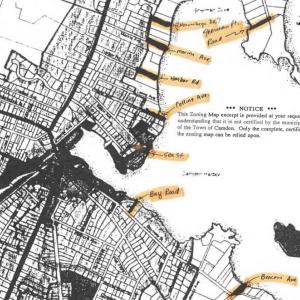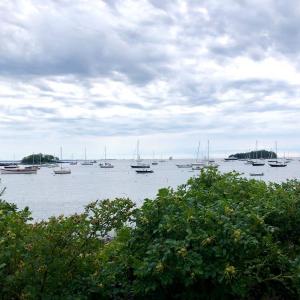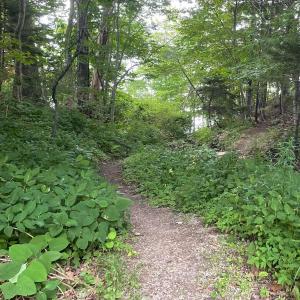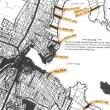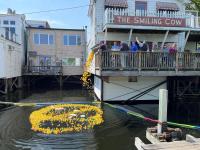Camden Select Board debate highlights tension between waterfront public access and private property rights
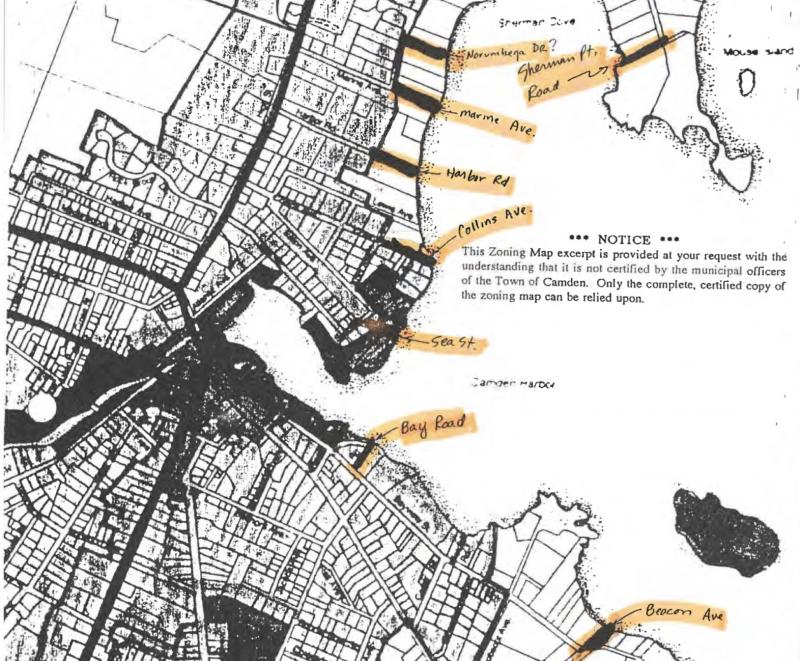 Camden’s current map (which dates back to 1994) of its public access points to the harbor.
Camden’s current map (which dates back to 1994) of its public access points to the harbor.
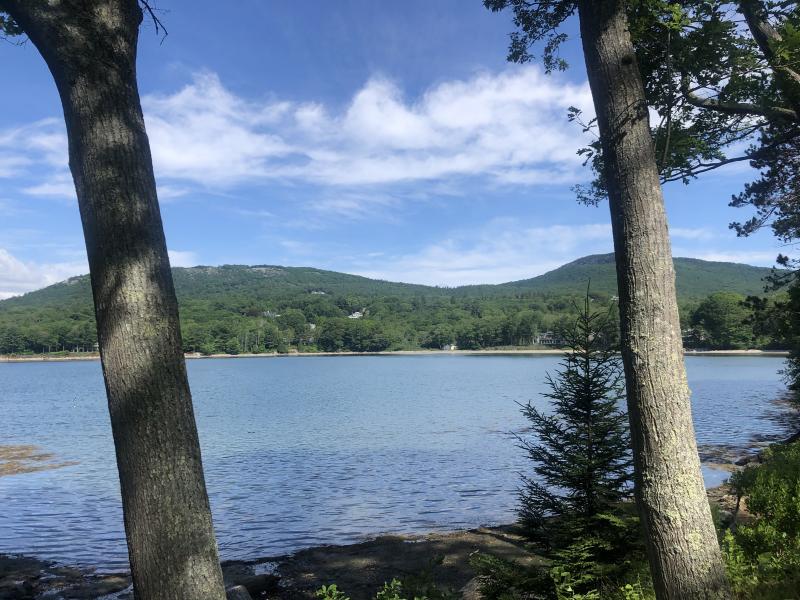 The view from the public right-of-way at Sherman’s Cove, toward Mount Battie, in June 2021. (Photo by Lynda Clancy)
The view from the public right-of-way at Sherman’s Cove, toward Mount Battie, in June 2021. (Photo by Lynda Clancy)
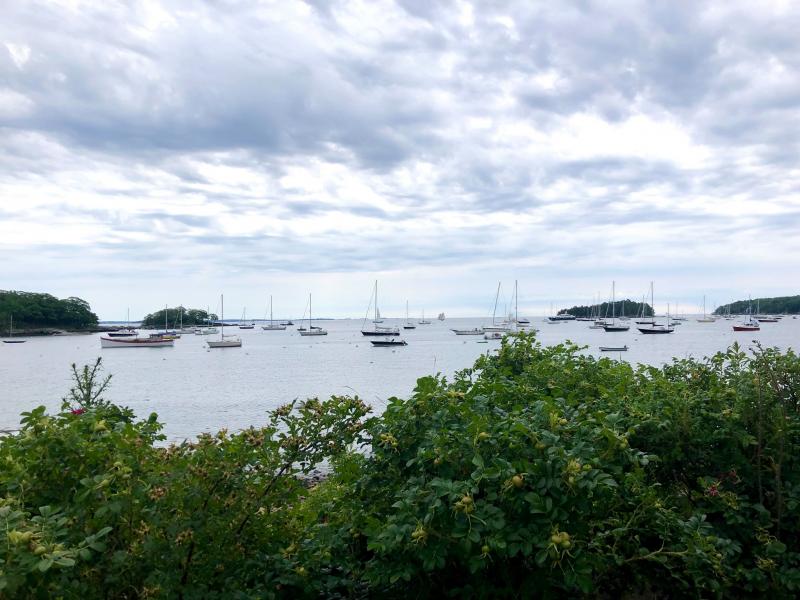 At the bottom of Marine Ave., the public right of way to the harbor extends of view to Penobscot Bay. (Photo by Lynda Clancy)
At the bottom of Marine Ave., the public right of way to the harbor extends of view to Penobscot Bay. (Photo by Lynda Clancy)
 Harbor Road access point is a narrow scruffy path to the shore in June 2021. (Photo by Lynda Clancy)
Harbor Road access point is a narrow scruffy path to the shore in June 2021. (Photo by Lynda Clancy)
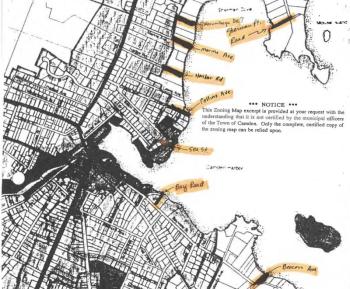 Camden’s current map (which dates back to 1994) of its public access points to the harbor.
Camden’s current map (which dates back to 1994) of its public access points to the harbor.
 The view from the public right-of-way at Sherman’s Cove, toward Mount Battie, in June 2021. (Photo by Lynda Clancy)
The view from the public right-of-way at Sherman’s Cove, toward Mount Battie, in June 2021. (Photo by Lynda Clancy)
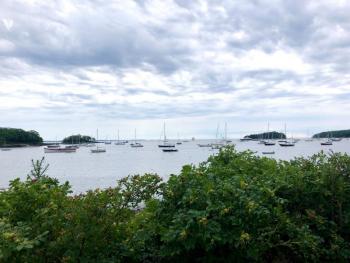 At the bottom of Marine Ave., the public right of way to the harbor extends of view to Penobscot Bay. (Photo by Lynda Clancy)
At the bottom of Marine Ave., the public right of way to the harbor extends of view to Penobscot Bay. (Photo by Lynda Clancy)
 Harbor Road access point is a narrow scruffy path to the shore in June 2021. (Photo by Lynda Clancy)
Harbor Road access point is a narrow scruffy path to the shore in June 2021. (Photo by Lynda Clancy)
CAMDEN — Last summer, Camden’s Select Board agreed to reexamine its public access points to the harbor and in one case, directed the town’s attorney to reclaim a property line that had been encroached upon by a private landowner, with the construction of a fence that prevented citizens from crossing from a town road and across a public trail to the harbor.
The fence was subsequently removed after Attorney William Kelly sent a letter to the landowner, and the right of way to the water was reopened. But the larger issue remained, and again was addressed at length March 1, during a regularly scheduled Select Board meeting. (Watch the meeting here)
It came up again before the Select board during a discussion concerning the application by property owners on Harbor Road requesting permission to build a six-foot-wide by 106-foot-long pier that would extend 86 feet into Sherman’s Cove. The pier, as proposed by landowners John Rixson and Mary Kelly, would also incorporate a three-foot wide by 45- foot long seasonal ramp with a 20-foot wide by 12-foot long seasonal float, attached to the pier.
The application was eventually approved, 3 to 1, by the Select Board but only after its members walked through a set of criteria laid out in the town’s Harbor and Waterways Ordinance, with regulations governing pier, wharf, breakwater, bulkhead and landfill construction.
The final vote, however, was not taken before a frank conversation about Camden’s maintenance of its shorefront access points, or as Belfast calls them, its range-ways, those centuries-old old paths to the ocean that allowed open passage for residents inland to fish, clam, launch skiffs, and otherwise gain access to the resources of the sea.
At the March 1 Camden meeting, Select Board member Alison McKellar strongly advocated on behalf of the public for maintaining an openly shared shoreline as land along Maine’s oceanfront increasingly is locked behind no-trespass signs.
McKellar, a staunch defender of the public’s right to maintain passage to the oceanfront, described how Camden’s access routes are overgrown, and not readily visible to the general public. (See map for known access points to Camden waterfront.)
While other board members agreed with her intent, they steered the discussion to the pier application alone, saying the applicants had already received approval from the Camden Harbor Committee and the Planning Board.
The Maine Department of Environmental Protection had also approved the pier, saying: “The proposed activity will not unreasonably interfere with existing scenic, aesthetic, recreational, or navigational uses,” nor would it, “unreasonably harm any significant wildlife habitat, freshwater wetland plant habitat, threatened or endangered plant habitat, aquatic or adjacent upland habitat, travel corridor, freshwater, estuarine, or marine fisheries or other aquatic life.”
The Department of Marine Resources also agreed, saying the proposed project should not cause any significant adverse impact to navigation or recreation based on the nature of the project and its location.
But McKellar questioned possible effects the pier would have on people navigating the shoreline in small craft — kayakers, canoes and paddle boards – who want to stay close to land. She emphasized that citizens need to feel comfortable using the shore, and that the town refocus on improving its public access routes. She also argued that mooring space was also being jeopardized by a new structure extending into Sherman’s Cove.
Town Attorney Bill Kelly explained to the Select Board that the public has the right to passage in the intertidal zone of the shore for fishing, fowling and navigation purposes.
Getting to the shore, however, is not always easy nor readily apparent.
While the board philosophically agreed with McKellar and the tenets of public access to oceanfront, Select Board member Sophie Romana said: “That is not the issue in front of us. The issue in front of us to approve an application and [does] the applicant meet the criteria. Tonight is not the place where we can do this. These people have gone through extensive process.”
Reach Editorial Director Lynda Clancy at lyndaclancy@penbaypilot.com; 207-706-6657

